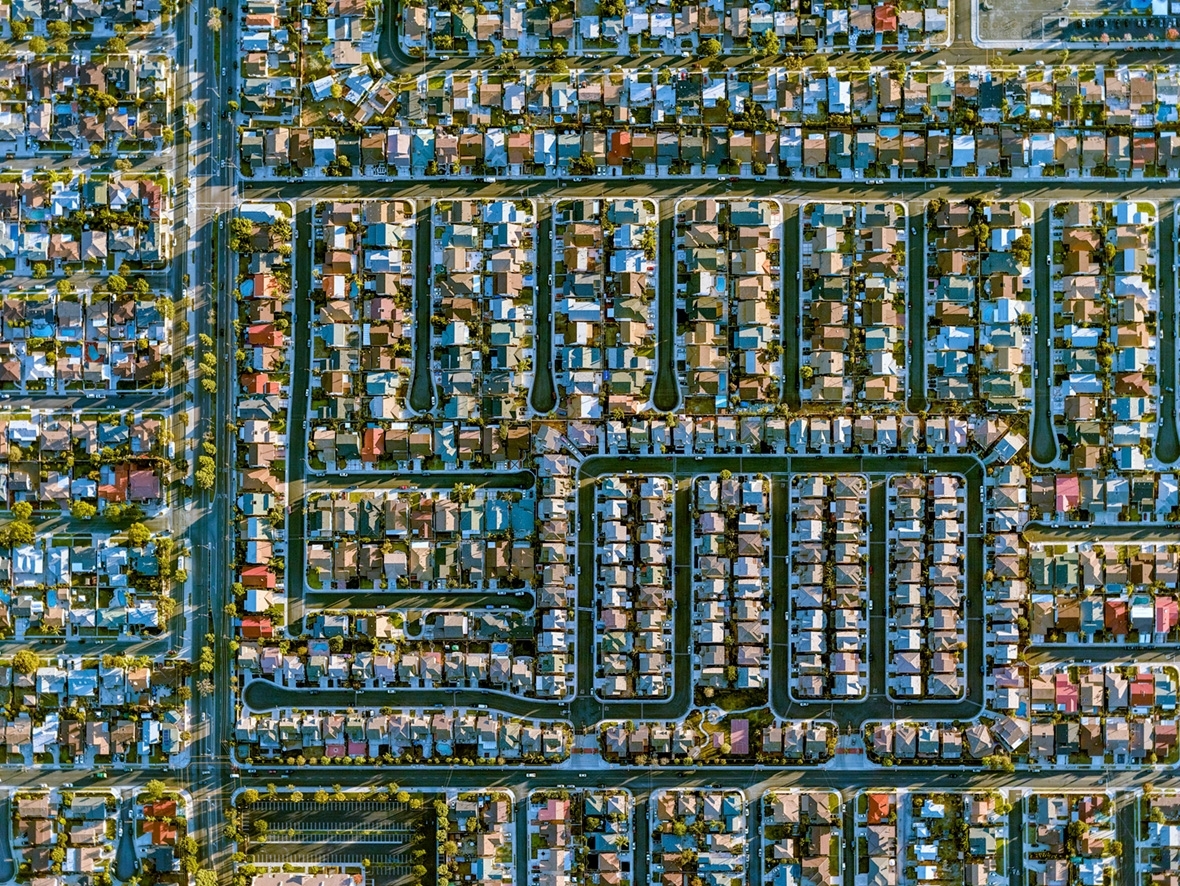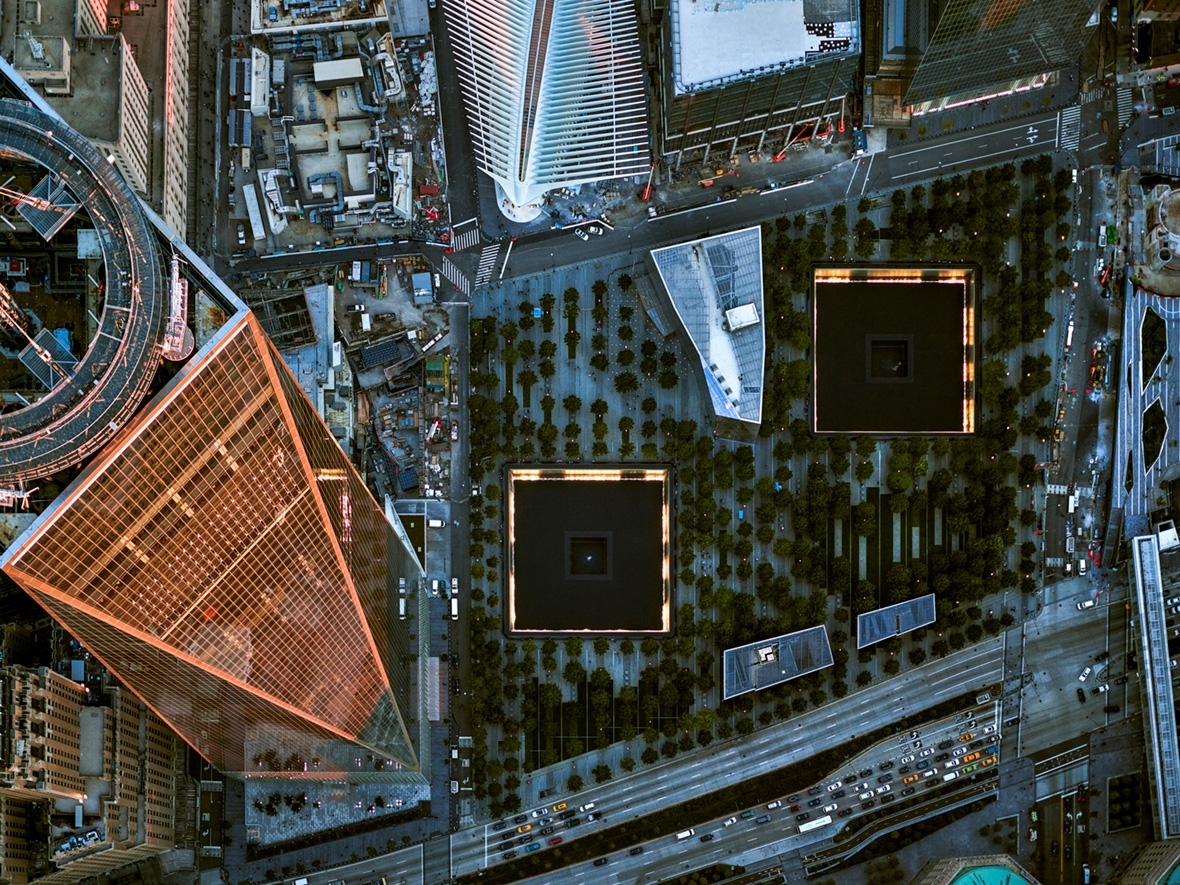American photographer Jeffrey Milstein's new book, LA NY , is a dazzling visual tale of two cities as seen from the air. Using high-resolution cameras mounted to a stabilising gyro, Milstein leaned out of helicopters over Los Angeles where he grew up and over New York where he now lives. He photographed straight down at a ninety-degree angle to emphasise the particular patterns of place, how the urban grid adapts to local topography, and how the topography itself adapts to human purposes.
Combining architecture, science, and art, Milstein's work explores residential and commercial neighbourhoods, parks and recreation spots, as well as industrial districts and the infrastructure of transportation. Iconic buildings and landmarks are easy to spot, alongside suburban housing developments, apartment complexes, commercial hubs, entertainment and financial centres, and airports and shipping terminals.
IBTimes UK presents images from the book LA NY: Aerial Photographs of Los Angeles and New York , by Jeffrey Milstein, published by Thames & Hudson, November 2017.
Stuyvesant Town, New York. A large, post-World War II private residential development, stretching from First Avenue to Avenue C, between 14th and 23rd Streets, with 8,757 apartments in 89 residential buildings covering about 80 acres of land, some of which is used for playgrounds and parkland.
© Jeffrey Milstein
Park La Brea, Los Angeles. The largest housing development in the US west of the Mississippi River, it has 4,255 units in 18 13-storey towers and 31 two-storey garden apartment buildings, set among numerous lawns and covering 160 acres of land.
© Jeffrey Milstein
Carson, Los Angeles. A tightly packed residential area in the city of 91,714, located 13 miles (21km) south of downtown LA.
© Jeffrey Milstein
Empire State Building, New York. At 1,250 feet (380 m) high, the 102-storey Art Deco skyscraper was the world's tallest building for nearly 40 years, from its completion in 1931 until it was superseded by the World Trade Center's North Tower in late 1970. The Empire State Building became the tallest building in New York again after the Twin Towers were destroyed on September 11 2001, until One World Trade Center reached a greater height in April 2012. It would still be the tallest building in Europe.
© Jeffrey Milstein
9-11 Memorial and One World Trade Center, New York. The memorial commemorates the attacks on 11 September 2001, which killed 2,977 victims, and the World Trade Center bombing of 1993, which killed six. The memorial is located at the World Trade Center site, with two square pools where the Twin Towers stood.
© Jeffrey Milstein
432 Park Avenue, New York. Completed in 2015 and standing 1,396 ft (425.5 m) high, this is New York City's second-tallest building, and its most expensive, with apartment prices ranging from $7 million to a whopping $95 million for the penthouse.
© Jeffrey Milstein
Times Square, New York. The neon heart of the city that never sleeps, Times Square stretches from West 42nd to West 47th Streets at the junction of Broadway and Seventh Avenue. Sometimes referred to as "The Crossroads of the World, it is one of the world's most visited tourist attractions, drawing around 50 million visitors every year.
© Jeffrey Milstein
Columbus Circle, New York. Located at the southwest corner of Central Park, this busy traffic circle can lay claim to being the centre of the Big Apple, as it is the point from which official highway distances from New York City are measured, just as distances in London are measured from Charing Cross.
© Jeffrey Milstein
Disneyland, Anaheim, California. Opened on 17 July 1955, the theme park was designed and built under the direct supervision of Walt Disney. It attracts more visitors than any other theme park in the world, with over 650 million guests since it opened.
© Jeffrey Milstein
Manhattan Beach Pier, Manhattan Beach, Los Angeles. The upmarket coastal city is named after the New York borough, simply because that's where the developer owned a house. For around 25 years, it was just called Manhattan, but the word “Beach" was appended in 1927 to lessen the confusion.
© Jeffrey Milstein
Container Ship, Port of Long Beach, Los Angeles. One of the world's busiest seaports, the Port of Long Beach covers 3,000 acres of land and 4,600 acres of water and handles more than 6.8 million 20-foot container units containing cargo valued at $180 billion (£137.5bn).
© Jeffrey Milstein
Century and Harbor Freeway Interchange, Los Angeles. Opened in 1993 to connect the I-110 with the new I-105, the towering stack interchange also houses the Harbor Freeway Metro station which jointly serves the Metro Green Line light rail and Harbor Transitway bus corridor, integrating cars, buses and trains in one giant intersection. It was also the location for the most memorable scenes of the films Speed and La La Land.
© Jeffrey Milstein


































